While testing a group of medium tele lenses on tha Sony a7RII, I came up with a way to examine longitudinal chromatic aberration (LoCA). Then I noticed that the a7RII’s autofocus (AF) optimized the red raw plane with the Batis 85. That seemed strange. I tested the Sony/Zeiss (Zony) 35mm f/2.8 and the Sony 90mm f/2.8 macro, and found that they behaved as expested. Today I’m taking a look at the Zony 55/1.8.
I lit a slanted-edge target with two Westcott LED panels, and set the color temperature to 5000K. I mounted a Sony a7RII with the Sony/Zeiss 55mm f/1.8 FE attached to the Cognisys computer-driven focusing rail. I set the controller up to use 192mm of travel and make 49 exposures 4mm apart. I set the assembly 5.5 feet from the on-axis target, mounted the lens, focused a little short of mid-rail using manual focusing, and focused on the grid using AF-S with flexible spot, AF priority, and small and medium spot sizes in turn. I exposed 49-shot series with the lens wide open. I used Jack Hogan’s Matlab program, MTF Mapper, and DCRAW to pick the horizontal edges and calculate the MTF50s for the raw color planes, imported the data into Excel, and plotted the results in cycles per picture height vs subject distance change.
Here is the manually focused analysis of the horizontal edges:
There is a moderate amout of LoCA present. Note that it’s possible to get MTF50s of over 800 cy/ph for all layers simultaneously, focusing in that manner would cause the importatn green channel to be way off its 1200 cy/ph capability.
Looking at the vertical edges:
The green channel doesn’t go quite as high, indicating a tiny bit of astigmatism.
Autofocus with a medium spot size, horizontal edges:
It looks like tha AAF system, faced with the LoCA, is trying to compromise. At least the focus point is on the right side of the red channel peak.
Same situation, but for the vertical edges:
That looks better. The astigmatism meant that the AF system couldn’t peak both the vertical and the horizontal edges, and it chose the horizontal ones. A wise move, but probably a mindless one; we have seen before that Sony AF shows a preference for vertical edges.
With a small spot size, which puts the spot entirely inside the focusing grid, the system doesn’t focus every shot. Here are data for what the AF could manage out of 49 tries, horizontal edges:
And now vertical edges:
When the AF system decided it was happy, the results are just about as good as with the medium spot.
This is really good AF performance. It is better than I can do manually.
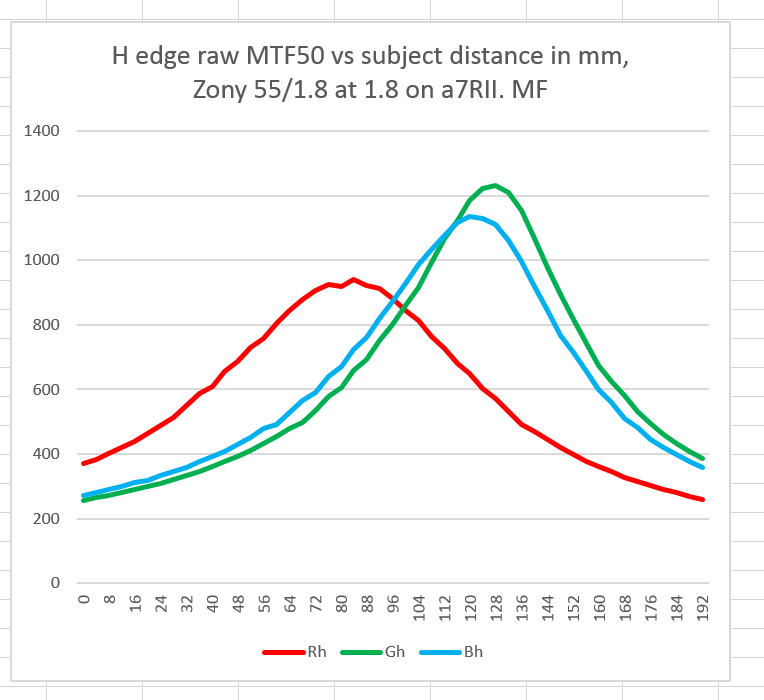
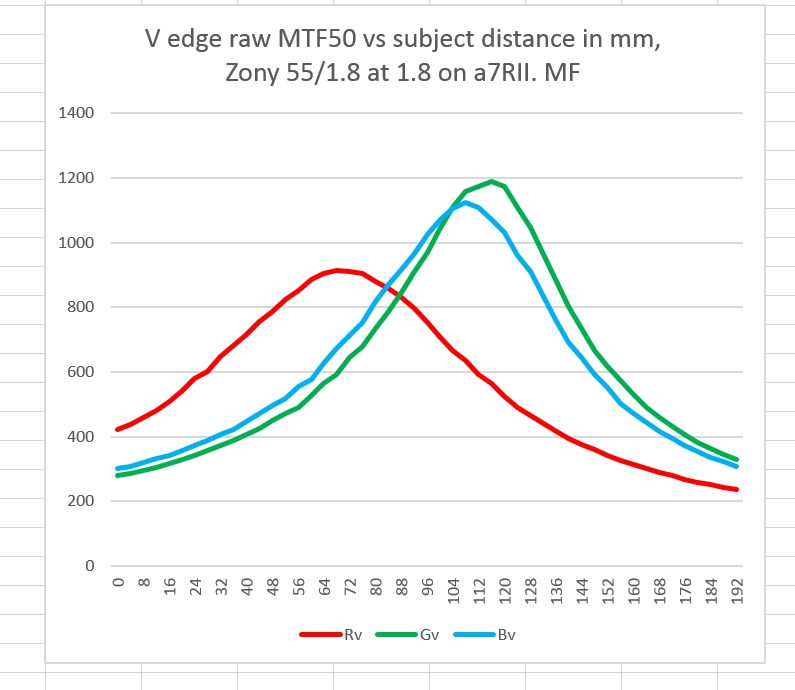
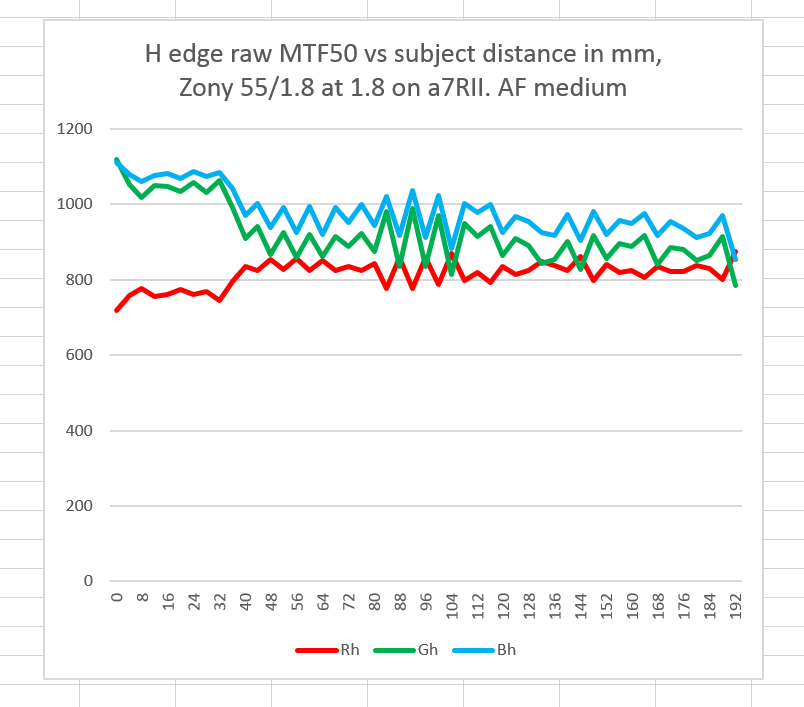
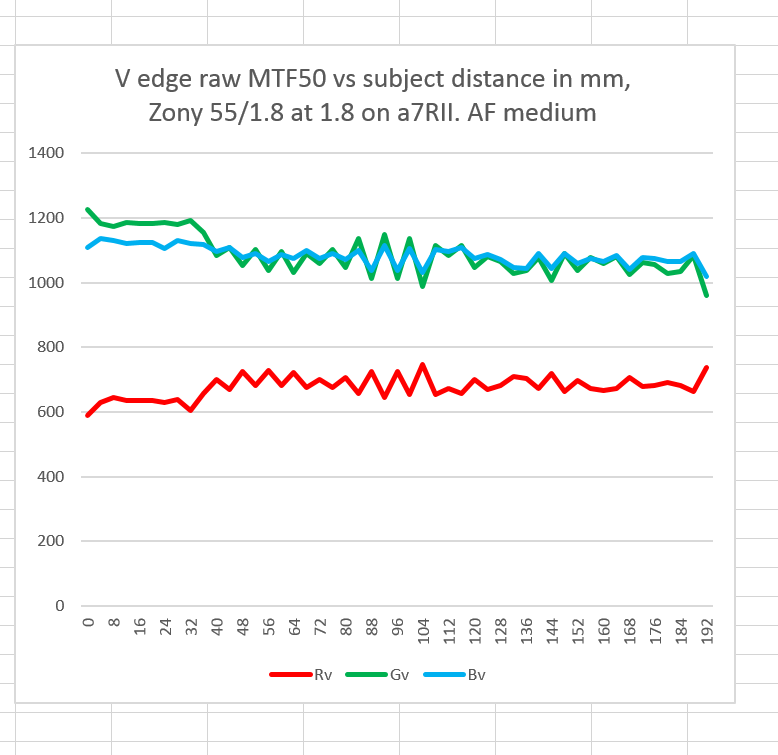
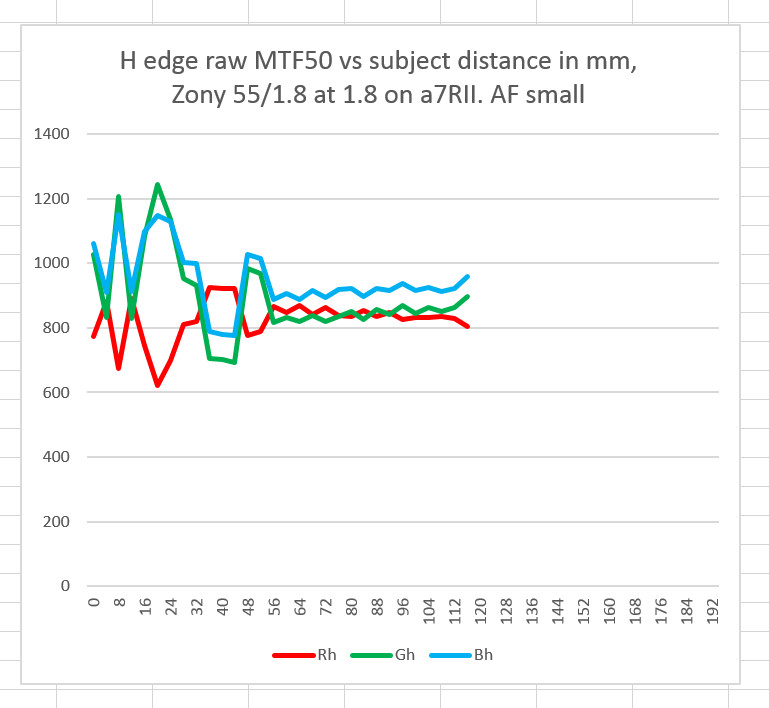
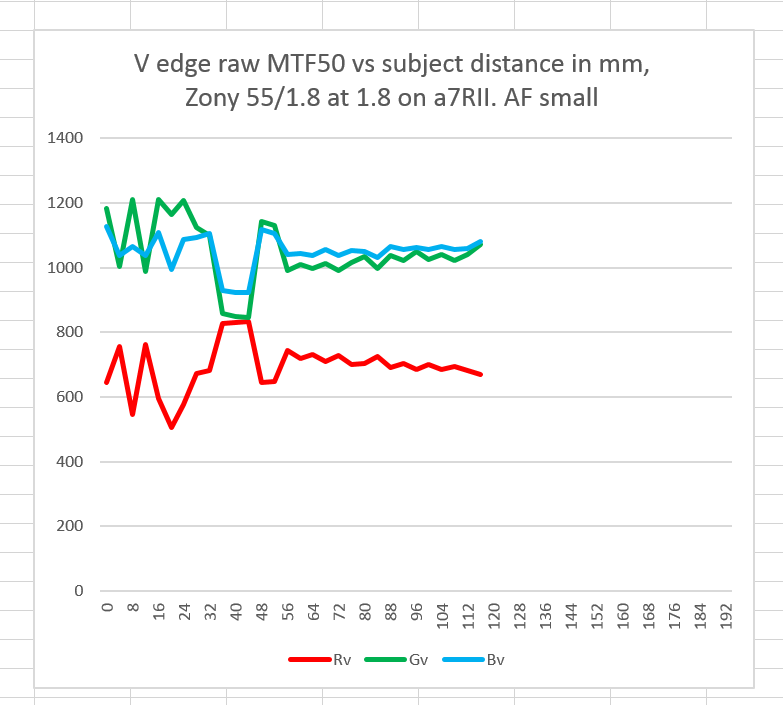
Excellent, Jim. And pretty decent performance by the AF. It would be interesting to see once with the camera in one spot how your best blind manual focus peaking would compare to the moving rail ‘manual’ focus curves. In other words, what’s the smallest typical step one can aspire to when focusing manually with the focus ring at low f-numbers with a lens like this (or a typical one of your choice)?